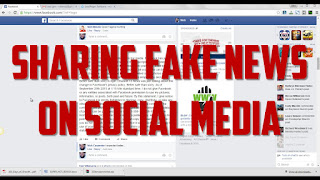Ever wonder why big companies make crazy marketing on
In recent years, many of the mega corporations (especially those with near monopolies) seem to go out of their way to make consumers angry. It’s not always on purpose, though. Sometimes they just make mistakes. In some instances, they are trying to jump ahead of the competition. Other times they just provide a product or services that is flawed (often because of the it was designed by committee or released too early). Sometime they misspoke in their marketing and sometimes they are just thinking of the bottom line too much. The closer they are to
 |
| Courtesy of |
Improper use of Apps – Many companies use apps today – especially in restaurants and retail stores. However, any time an App is launched with flaws, has poorly executed features, or are just being used to push commercials to their clients’ smartphones, they will fail. If the Apps don’t demonstrate real intrinsic value, the App will just piss people off and tarnish the company using that App.
 |
| Courtesy of |
Improper use of QR codes – It seems to be a common problem with the use of QR codes. Businesses just seem to use them in a way that renders them useless. For example, I have seen posters with large QR codes on them, but the poster will be plastered on a wall in the wrong place, either too low or too high for the average person to be able to scan it. Another common mistake is having the landing page for the QR code link to a web page that is not mobile-friendly. Almost all QR codes are scanned by smartphones (some by tablets). All smartphones have relatively small screens. If the web pages are not mobile friendly, the visitor has a terrible marketing experience and they just leave. Check out our story on Mobilgeddon. The last common mistake is to create a QR code and then either don’t test it or later change the address. This renders the QR code useless. Always place QR codes in a place where people can easily scan it with their smartphones or tablets. They are best used in print mediums like magazines and on business cards and flyers. They have also been used successfully in TV commercial’s (where it stays on the screen for 20 seconds or so) and on billboards near stop lights and stop signs.
 |
| Courtesy of |
Improper use of blogging – Blogs today act more like the daily news or weekly magazine than the short web logs of yesteryear. Many professed blog experts teach that a blog should be short in length (400 to 500 words), yet today there is little evidence that short blogs produce loyal customers. In fact, very few people can write an article with substance in 800 words, much less the 400 to 500 words often touted as the best size to stick with. There is lots of good research that shows substantive blogs of 1500 to 2500 words produce more loyal readers than shorter blogs. In fact, lengthier blogs have lower bounce rates because of their content-rich nature. They are also more likely to be shared and commented on as well. Longer length, high quality blogs also produce
Improper use of video – People love to watch YouTube videos. But not just any kind of
video
 |
| Courtesy of |
Nickel and dime you to death – Another common mistake I see companies do on the web is to create what seems to be an irresistible offer. However, often at checkout time, the buyer receives a message that they need to buy more stuff to make it work. When they discover they need extra items or more service to make the offer a real deal, it often makes them feel cheated or deceived. Create a legitimate offer that takes the risk out of the equation for the customer. Make it a real deal for them. Buying customers is a great way to create recurring business. Don’t make an offer that is really only a half a deal! Read How to Create an Irresistible offer for more details.
 Extensive change of the Look and Feel of a product or service – This is one of my pet
Extensive change of the Look and Feel of a product or service – This is one of my pet  Upgrading Apps and software before they have been fully tested – Another common mistake is when companies release buggy applications or Apps and use the general public as test Guinea pigs to work out the kinks. Applications should be well tested with opt-in beta test clients and the test needs to be comprehensive by including a large number of diverse users. The test should also last for a reasonable amount of time (at least a year). Nothing makes consumers madder than an application blowing up while they are using it. Make them lose their data and you have just created a huge trust gap.
Upgrading Apps and software before they have been fully tested – Another common mistake is when companies release buggy applications or Apps and use the general public as test Guinea pigs to work out the kinks. Applications should be well tested with opt-in beta test clients and the test needs to be comprehensive by including a large number of diverse users. The test should also last for a reasonable amount of time (at least a year). Nothing makes consumers madder than an application blowing up while they are using it. Make them lose their data and you have just created a huge trust gap.
So what should corporations be concentrating on? It’s really simple, provide a better value than the competition. Added value is what makes customers (and the audience) happy and loyal. Flashy marketing, hype, or deceptive marketing is on its way out. Savvy consumers will no longer accept poor products or services. They use social media as a weapon. It allows them to fight back. By the same token, if you reward your customers with good value, great products or services, deal with them honestly, and provide good customer support, they will love you. If you add easy to use websites and easy to find contact information, positive and meaningful communications, and a sincere desire to resolve their complaints, you will create raving fan loyal for life. Get your company the rewards they want. Create loyal patrons by earning it. If you do, they will buy your products and services and they will sing your praises on the same social media that they can use to cut you down when you fail them.
In this article I have discussed 10 ways that giant corporations often make their customers angry. The examples provided reflex the most common mistakes that widely occur. It also provides what these corporations need to focus on because the use of social media renders their erroneous missteps into problems that destroy their credibility and cost millions in revenue.
That's my opinion, I look forward to hearing yours.
If you haven’t done so already, check out our BlogTalkRadio show on this subject for th ent ering those phrases in the search box, at the top of this blog. I also recommend reading the “Understanding the Difference Between Branding, Marketing and Advertising”, What Every Business Needs When it Grows Up and “Marketing 101 – What you need to Know before Buying Advertising” just to name a few. Don’t forget to Plus us on Google.
If you'd like a free copy of our eBook, "Internet Marketing Tips for the 21st Century," please fill in the form below and we'll email it to you. Your information is always kept private and is never sold.
Hector Cisneros is COO and director of Social Media Marketing at Working the Web to Win, an award-winning Internet marketing company based in Jacksonville, Florida. He is also co-host of the weekly Internet radio show, "Working the Web to Win" on BlogTalkRadio.com, which airs every Tuesday at 4 p.m. Eastern. Hector is a syndicated writer and published author of “60 Seconds to Success.”
Related articles













Brilliant Article, I am looking for this type of article from many days. Thanks for sharing this with us. Make A customer not a Sale
ReplyDelete